Do you recognise the signs of erosive tooth wear?

Case study images to help you recognise the signs and risk factors
A new epidemiological study across seven European countries highlighted that 72% of adults show signs of significant tooth wear (BEWE score of > 2). Amongst younger adults aged 18-27 this figure was 40%. This data reinforces the need to identify early signs and advise patients to help prevent further progression.1 Interestingly, as part of the study, risk factors included consuming food/drink 6+ times a day and consuming juice at breakfast.1
This page demonstrates the visual signs of erosive tooth wear through case studies using images generated by an intra-oral scanner in partnership with Professor Nicola West, Bristol Dental School. The severity of tooth wear is measured using the Basic Erosive Wear Index (BEWE) and the cases focus on early erosive tooth wear in young adults. You can learn more about the BEWE and diagnosis of erosive tooth wear clicking the link below.
The average life expectancy of a child born in the UK is currently around 78 years for males and 82 for females,2 and with improved nutrition, increased life expectancy and increased social and dental health awareness the probability of maintaining a functional dentition throughout life is escalating. Over this lifetime, our teeth will endure a great range of mechanical and chemical insults even compared to previous generations, including erosive tooth wear.
Scroll down to access 3 case studies using intraoral scanner video and detailed images.
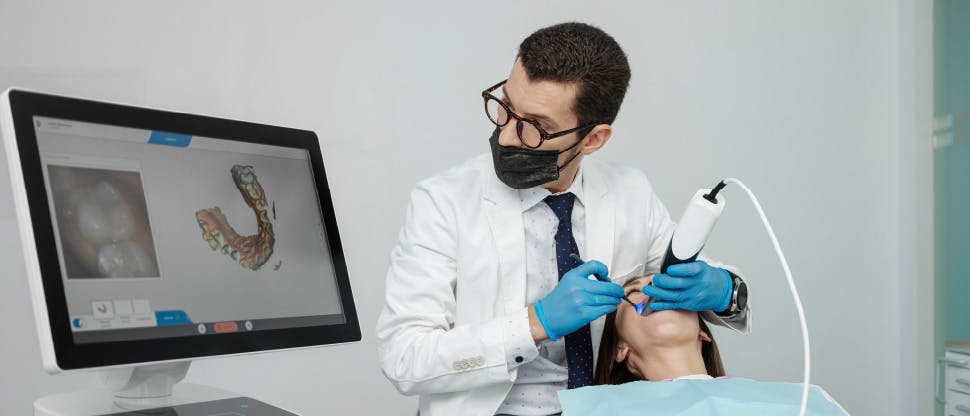
The increased role of intra-oral scanners
The following cases use the 3 shape IOS scanner (sometimes called Trios) and highlight the role that this technology could play in helping dental professionals to monitor erosive tooth wear. On an IOS scan certain features such as enamel translucency, which can be difficult to spot, is highlighted more as it shows as grey.
Learn more about the role of intraoral scanners in erosive tooth wear by accessing the Haleon sponsored lectures from the International College of Prosthodontics conference. Click here to access recordings.
Case 1
- 25-year-old female who is conscious of her appearance.
- Healthy lifestyle including diet and exercise.
- Drinks fruit-based drinks 2-3 times a week and consumes alcoholic spirits with fruit juice 1-2 times a week. As a recently qualified medic she used to drink more when a student.
- Excellent oral hygiene and no gingivitis and has no restorations for caries. She had orthodontic treatment as a teenager.
This case is an example of a BEWE score 1 highlighting initial loss of surface texture in a patient who is susceptible to tooth wear which is mild. In the IOS video we are also able to observe areas of staining which show the erosive tooth wear is not active currently.
View the video to learn more.
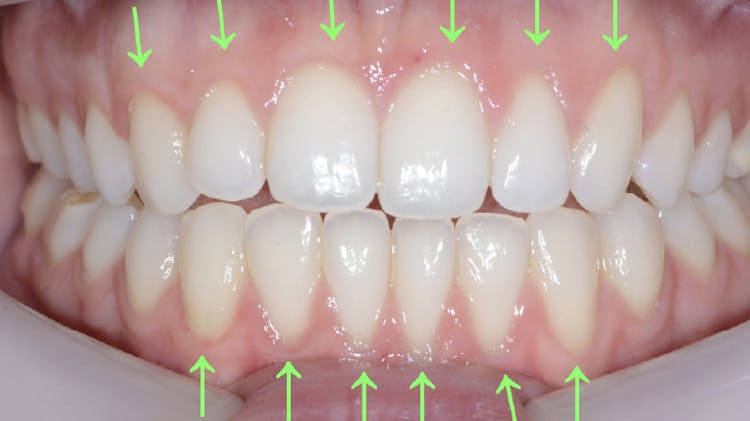
BEWE 1
Initial loss of surface texture which is difficult to see (from UR3 to UL3 and from LR3 to LL3). The appearance is smooth, silky and shiny with a loss of patina. Sometimes the edges appear shiny.
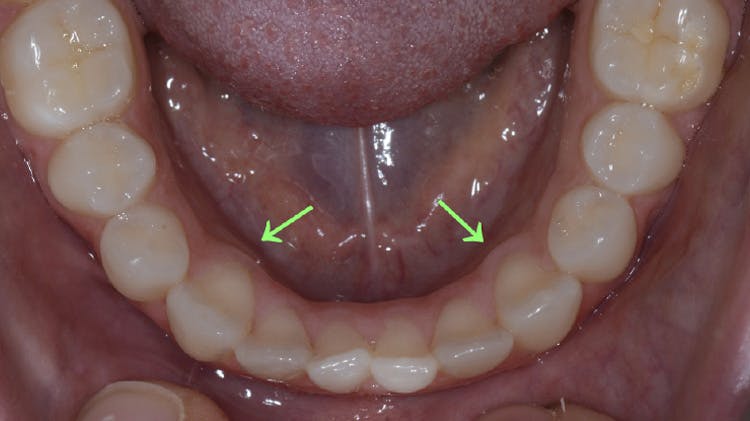
BEWE 1
Initial loss of surface texture is visible on the lower palatal surface giving a smooth appearance.
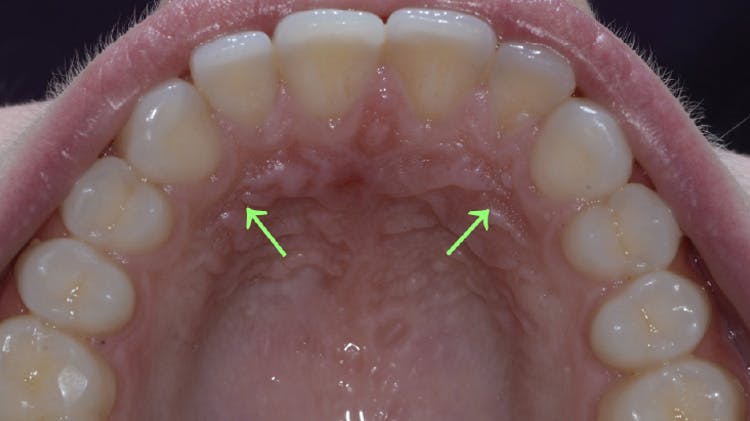
BEWE 1
Mild erosive tooth wear is also visible on the upper palatal surface.
Case 2
- 23-year-old male who works in data analytics and is conscious of his appearance.
- He has a healthy lifestyle and exercises at least once a day. As part of his training, he eats every 4 hours and drinks fruit at least 2-3 times a day. Other than this he drinks water and black coffee.
- When in the gym he clenches his teeth when lifting weights and some tooth wear is visible as a result.
- He drank alcohol on a regular basis when at university, but now drinks rarely.
- He brushes twice a day with a manual toothbrush and his oral hygiene is excellent.
- There is no gingivitis but there may be some signs of overbrushing. He is periodontally healthy.
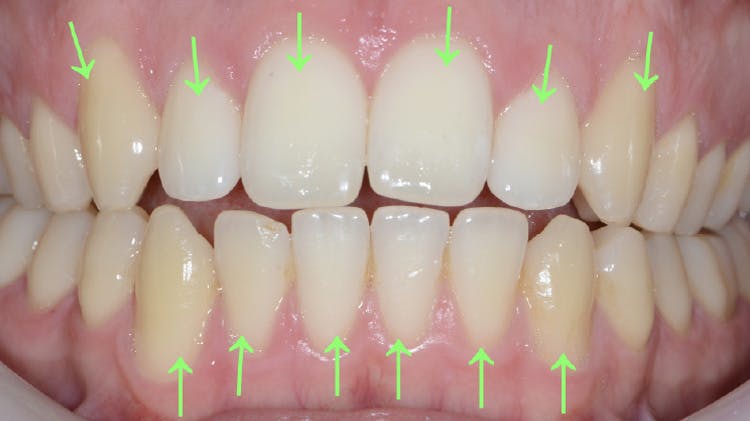
BEWE 1
Most surfaces of his teeth have a BEWE 1 – early signs of tooth loss, loss of surface texture which appears smooth or sometimes glazed or dull. His habits mean he is at risk of further tooth wear.

BEWE 1 close to BEWE 2
We can see loss of surface patina in this image and on the premolar, we can see hints of dentine.
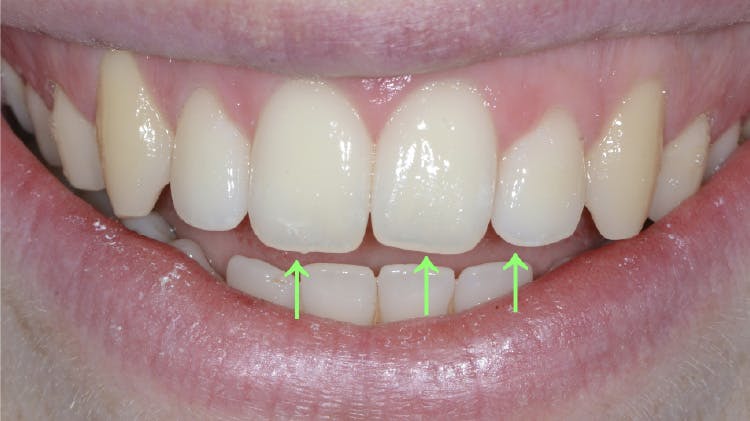
BEWE 1 close to BEWE 2
On the upper incisor we can see that the edges of his upper teeth appear thin and translucent. Although this shows as clear and translucent on this image it is shown as grey on the IOS scan.
Case 3
- 28-year-old male lawyer.
- He has a reasonably healthy lifestyle currently attending the gym three times a week.
- His diet is nutritionally healthy, and he has lime juice on his salads and drinks fruit juice 2-3 times a day or water.
- He drinks alcohol 2-3 times a week and this is generally a spirit with an acidic mixer.
- While at university, this patient drank large amounts of soft acidic drinks throughout the day and mainly cider in the evenings. Whilst away from home as a student his oral hygiene was also poor, and he did not attend the dentist regularly.
- He now visits the dentist regularly and upholds a good oral hygiene routine including twice daily brushing. He does have some gingivitis.
This patient is classified as having moderate erosive tooth wear overall or BEWE 2. He is susceptible and at risk of further erosive tooth wear if his diet doesn’t change.
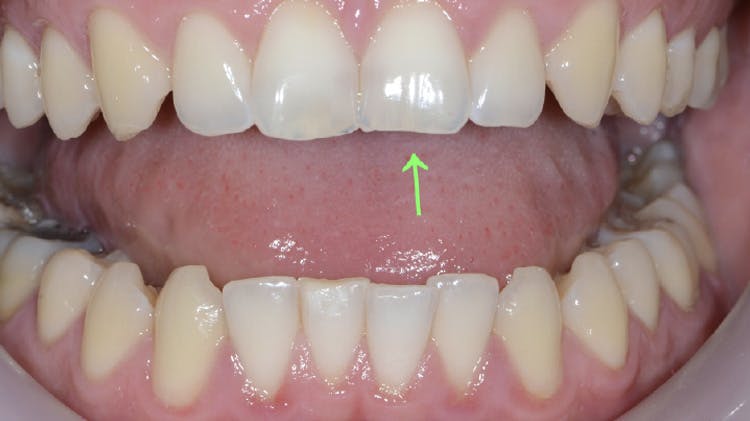
BEWE 1 & 2
In this image we see very thin translucent edges on the teeth. You can also see signs of chipping and wear. This patient clenches his jaw when lifting weights and we can see flattening of edges on the upper canine.
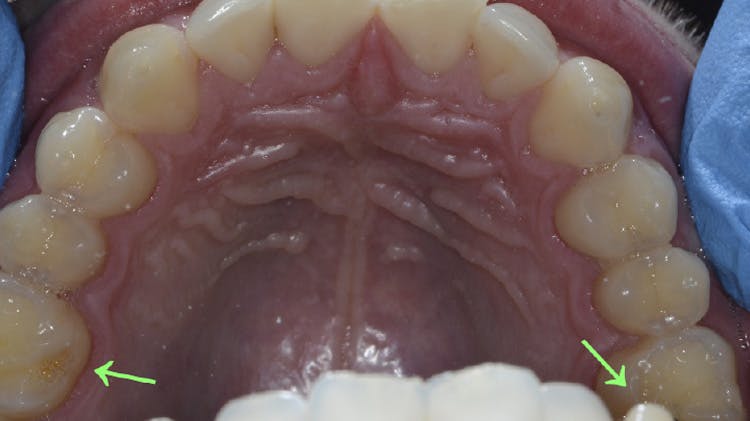
BEWE 2
On the upper right six we can see tooth loss. We can also see translucent edges on the UL1 and UR1. There is also a halo on the enamel cusps.
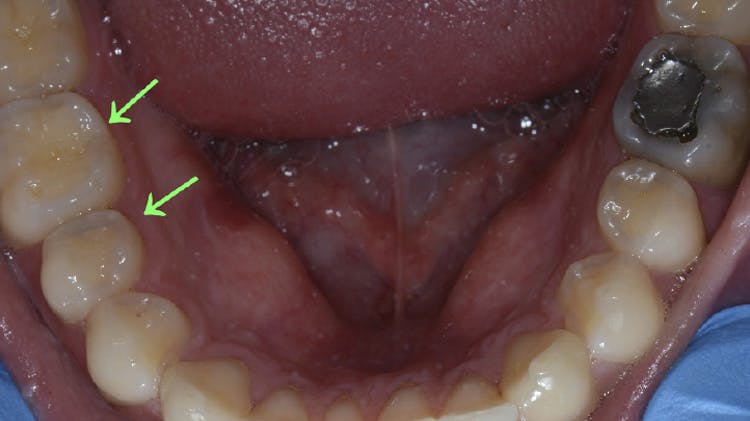
BEWE 2
On the lower molars we can see tooth surface loss in the form of concavities or cupping where dentine has been exposed. There are translucent edges across the molars. We see that where he has a restoration in his L6 it is proud of the enamel, and this is a sign of erosive tooth wear in this area.
Access additional resources for erosive tooth wear

Pronamel overview
Learn more about the Pronamel range which helps protect against the effects of enamel loss and erosive tooth wear.
Identifying erosive tooth wear
Learn more about identification of erosive tooth wear including the basic erosive wear examination (BEWE) tool.
